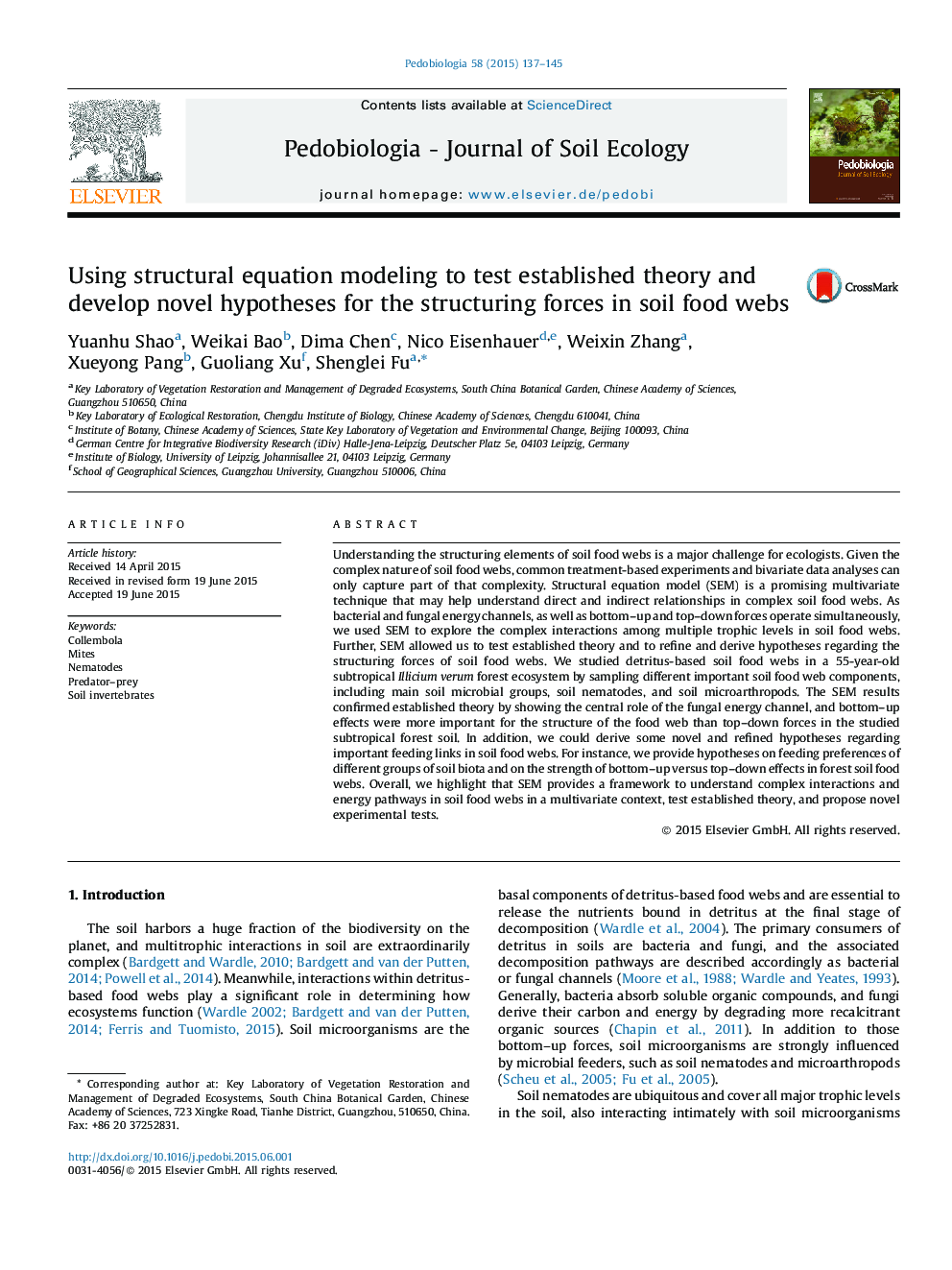| کد مقاله | کد نشریه | سال انتشار | مقاله انگلیسی | نسخه تمام متن |
|---|---|---|---|---|
| 2060988 | 1076425 | 2015 | 9 صفحه PDF | دانلود رایگان |
• We studied soil food webs in a forest ecosystem by using structural equation model.
• Bottom–up effects were the dominant force in the studied forest soil ecosystem.
• The fungal energy channel was central role of the studied soil food web.
• Structural equation model allows inferring complex interactions in soil food webs.
• Novel experimental tests can be inspired by using structural equation model.
Understanding the structuring elements of soil food webs is a major challenge for ecologists. Given the complex nature of soil food webs, common treatment-based experiments and bivariate data analyses can only capture part of that complexity. Structural equation model (SEM) is a promising multivariate technique that may help understand direct and indirect relationships in complex soil food webs. As bacterial and fungal energy channels, as well as bottom–up and top–down forces operate simultaneously, we used SEM to explore the complex interactions among multiple trophic levels in soil food webs. Further, SEM allowed us to test established theory and to refine and derive hypotheses regarding the structuring forces of soil food webs. We studied detritus-based soil food webs in a 55-year-old subtropical Illicium verum forest ecosystem by sampling different important soil food web components, including main soil microbial groups, soil nematodes, and soil microarthropods. The SEM results confirmed established theory by showing the central role of the fungal energy channel, and bottom–up effects were more important for the structure of the food web than top–down forces in the studied subtropical forest soil. In addition, we could derive some novel and refined hypotheses regarding important feeding links in soil food webs. For instance, we provide hypotheses on feeding preferences of different groups of soil biota and on the strength of bottom–up versus top–down effects in forest soil food webs. Overall, we highlight that SEM provides a framework to understand complex interactions and energy pathways in soil food webs in a multivariate context, test established theory, and propose novel experimental tests.
Journal: Pedobiologia - Volume 58, Issue 4, July 2015, Pages 137–145
